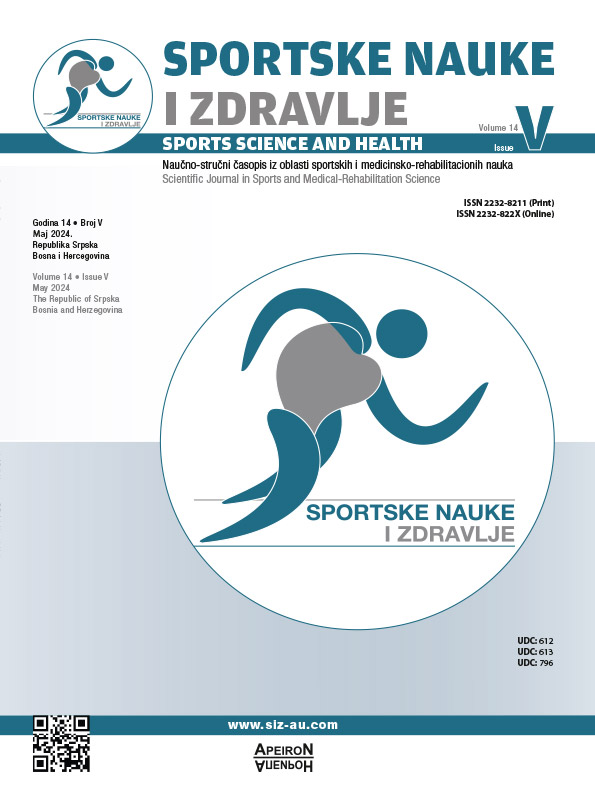The Effect of a Six-Month Training Process on the Anthropological Status of the Female Cadet Volleyball Players
DOI:
https://doi.org/10.7251/SSH24V026SKeywords:
training, motor skills, anthropometric characteristics, continuous training process, physical activityAbstract
The aim of this study was to determine any potential differences in the changes of individual anthropometric characteristics and motor skills of female volleyball players from the DIF volleyball school, aged between 12-15 years, who were tested before and after a continuous six-month training process. The sample consisted of 50 female volleyball players from the DIF volleyball school, aged 12-15 years, who trained four times a week for 90 minutes per session. All subjects were tested before and after the six-month continuous training process. Anthropometric characteristics, such as body height, body mass, body fat percentage, muscle percentage, body mass index, and arm span measurement, were determined for all subjects. Motor skills were also evaluated, including hand grip strength, flexibility of the muscles of the back of the thigh, flexibility of the shoulder girdle, explosiveness of the shoulder girdle muscles, explosiveness of the leg muscles (high jump), and agility. The results showed a statistically significant difference in body height, BMI, arm span, hand grip strength, overhead stick rotation, sit and reach, and medicine ball throwing. One of the limitations of this study was the insufficient sample size. However, despite this limitation, the results can be considered as a significant initial basis for examining the relationship between anthropometric parameters and motor skills, which can contribute to the existing knowledge in this area. It is important to note that only well-dosed and organized physical activity can lead to improvement in the results of young athletes.
